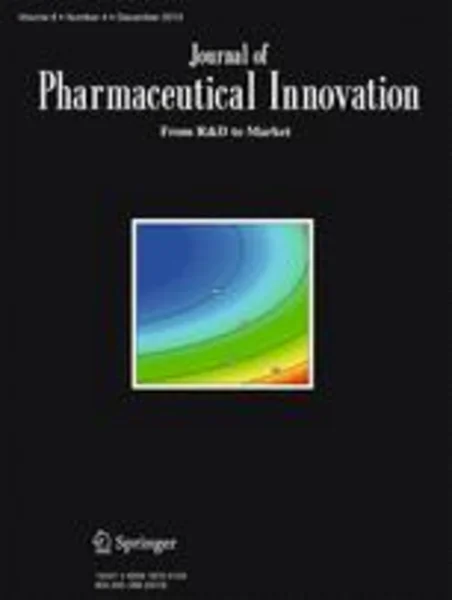-
hybrid controls combining first-principle calculations with empirical modeling for fully automated fluid bed processing
جزئیات بیشتر مقاله- تاریخ ارائه: 1392/07/24
- تاریخ انتشار در تی پی بین: 1392/07/24
- تعداد بازدید: 950
- تعداد پرسش و پاسخ ها: 0
- شماره تماس دبیرخانه رویداد: -
introductionthe us food and drug administration has encouraged the use of the guidelines put forth by the international conference on harmonization (ich-q8) that allow for operational flexibility within a validated design space. these guidelines make possible fully automated control systems that incorporate information about a process back into the system to adjust process variables to consistently hit product quality targets. traditionally, fluid bed control systems have used either first-principle calculations to control the internal process environment or purely empirical methods that incorporate online process measurements with process models and real-time data management. this study demonstrates the development and implementation of a novel hybrid control system that combines the two traditional approaches.
material and methods
granules containing gabapentin, and hydroxypropyl cellulose were prepared in a high-shear granulator and dried in a fluid bed processing system (diosna minilab). the fluid bed dryer was outfitted with near-infrared (nir), pressure, temperature, and flow sensors which were connected to a distributed control system (dcs) that was used to exercise control of the system. the control system itself consisted of a delta v dcs (emerson process management, equipment and controls, inc., lawrence, pa, usa) that was used to interface the fluid bed dryer with syntq (optimal, bristol, uk). the dried granules were characterized by median particle size and quantity of gabapentin lactam formed (a chemical degradant).
results
control of a fluid bed dryer utilizing both a first-principle control strategy and empirical model-based controls was demonstrated. first-principle control was based on an environmental equivalency factor model to maintain a constant thermodynamic environment. empirical models included a pressure drop across the bed and nir measurement of water content. these systems were combined effectively to consistently dry granules prepared by high-shear wet granulation. utilization of this system greatly reduced the number of experiments necessary to characterize the performance of the system and facilitated control of the process with respect to the two properties of interest, median particle size and chemical stability during drying.
مقالات جدیدترین رویدادها
-
استفاده از تحلیل اهمیت-عملکرد در ارائه الگوی مدیریت خلاقیت سازمانی و ارائه راهکار جهت بهبود
-
بررسی تاثیر ارزش وجوه نقد مازاد بر ساختار سرمایه شرکت های پذیرفته شده در بورس اوراق بهادار تهران
-
بررسی تأثیر سطح افشای ریسک بر قرارداد بدهی شرکت های پذیرفته شده در بورس اوراق بهادار تهران
-
بررسی تأثیر رتبه بندی اعتباری مبتنی بر مدل امتیاز بازار نوظهور بر نقد شوندگی سهام با تأکید بر خصوصی سازی شرکت ها
-
تأثیر آمیخته بازاریابی پوشاک ایرانی بر تصویر ذهنی مشتری پوشاک ایرانی (هاکوپیان)
-
مطالعه اثر بسته بندی فیلم ژلاتین و اسانس زیره سبز بر رشد باکتری های انترو باکتریاسه، سرمادوست و کپک و مخمر در فیله مرغ تحت شرایط یخچالی
-
مهم ترین گیاهان دارویی مورد استفاده در درمان بیماری های اعصاب و روان
-
آشکارسازی ساختمان های تخریب شده بر اثر زلزله درمدت زمان کوتاه با استفاده از تصاویر ماهواره ای با قدرت تفکیک بسیار بالا
-
effects of nails skew angle on soilnailing systems performance
-
investigating the cross-section and structural geometry effects on response of flat scissor-type structures in deployed configuration
مقالات جدیدترین ژورنال ها
-
مدیریت و بررسی افسردگی دانش آموزان دختر مقطع متوسطه دوم در دروان کرونا در شهرستان دزفول
-
مدیریت و بررسی خرد سیاسی در اندیشه ی فردوسی در ادب ایران
-
واکاوی و مدیریت توصیفی قلمدان(جاکلیدی)ضریح در موزه آستان قدس رضوی
-
بررسی تاثیر خلاقیت، دانش و انگیزه کارکنان بر پیشنهادات نوآورانه کارکنان ( مورد مطالعه: هتل های 3 و 4 ستاره استان کرمان)
-
بررسی تاثیر کیفیت سیستم های اطلاعاتی بر تصمیم گیری موفق در شرکتهای تولیدی استان اصفهان (مورد مطالعه: مدیران شرکتهای تولیدی استان اصفهان)
-
بررسی رابطه بین ویژگی های آنتروپومتریکی با آسیب های شایع دانش آموزان دونده شهرستان بجنورد
-
ارائه مدلی یکپارچه از تعریف و ابعاد هویت مکان و تعیین شاخص های سازنده هویت؛ نمونه مورد مطالعه: ساکنین شهر شیراز
-
مطالعه تطبیقی ملیله کاری اردبیل و زنجان
-
بررسی پیش بینی میل به گردش شغلی بر اساس ابعاد درگیری شغلی و منابع شغلی کارکنان اداره کل ورزش و جوانان استان همدان
-
the karkheh river streamflow forecast based on the modelling of time series




سوال خود را در مورد این مقاله مطرح نمایید :